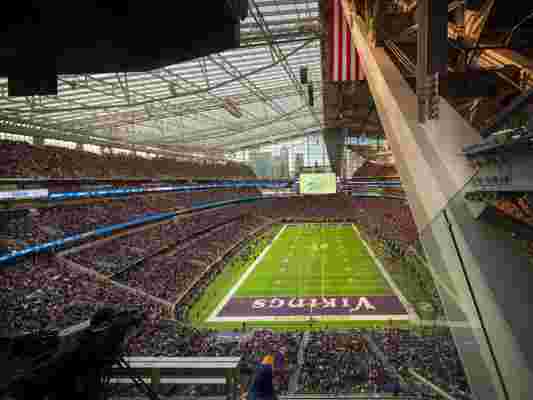This Friday, the Minnesota Vikings will hold a ribbon-cutting ceremony to open their brand-new home—a state-of-the-art, $1.1 billion stadium. In 2012 Dallas-based architecture firm HKS was commissioned to design the venue called U.S. Bank Stadium. Designing such well-regarded stadiums as Miller Park in Milwaukee, AT&T Stadium in Dallas, and Lucas Oil Stadium in Indianapolis, the firm has a reputation for excellence when it comes to creating venues for sports franchises. “When working on a major sports complex, we begin with a deep dive into the culture of the city and become more anthropologists than architects,” says John Hutchings, principal architect at HKS and head of the U.S. Bank Stadium project. “This is why, if you study our work, all of our stadiums appear totally different than the one that came before it.” After studying the roots of Minnesota for inspiration, Hutchings and his colleagues decided on a distinctly angular structure with steep roofs. “We drew much inspiration from the sharp angular shapes of ice that form in the winter on the Mississippi River,” he says.
Since HKS was primarily designing the stadium to house the Minnesota Vikings, they decide to study ancient Nordic architecture as well. “We noticed that centuries ago, they had very steep roofs to assist in getting the snow off the roof. So we implemented that design in our structure, and by doing so, we were actually able to have less steel tonnage in the roof than we had expected.”

Roughly sixty-percent of the stadium is covered in ETFE glass technology, which provides a healthy amount of natural lighting.
Initially, the clients wanted HKS to design a stadium with a retractable rooftop. “We did a study into the number of times that stadiums with retractable roofs in America actually opened them,” says Hutchings. “The number was very small, likely due to the fact that their fans would quickly get too hot or cold.” The firm instead created a design using ETFE glass technology (covering roughly 60 percent of the stadium), effectively allowing the fans to feel as though they were sitting outdoors due to the glass transparency.
U.S. Bank Stadium, which can hold up to 70,000 fans, will feature eco-friendly measures such as less water consumption, saving 5.67 million gallons of water per year. Furthermore, nearly 40,000 square feet of additional green space has been allocated around the stadium for visitors to enjoy and for quick access to public transportation (HKS predicts one-third of all fans will arrive and leave the stadium by way of public transportation).

Leave a Reply